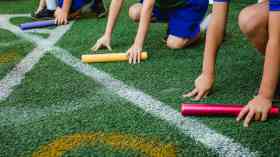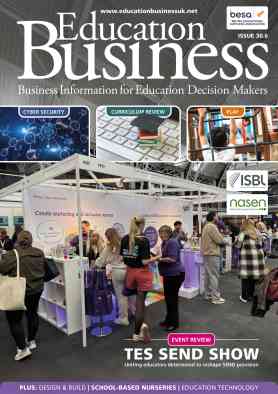Shaping citizens in the great outdoors

Outdoor education in the UK has a history that stretches back to the early 20th century. The first centres were established in the 1950s, and many are now represented by the Association of Heads of Outdoor Education Centres (AHOEC). AHOEC centres are at the forefront of delivering innovative, real, and exciting experiences to young people across the UK, its key aims being to promote all-round personal development through outdoor education and residential experience; to develop, establish and maintain good and safe practice in outdoor education; to encourage awareness of, and active respect for the environment; and
to foster greater confidence and regard for others through a series of adventurous challenges requiring cooperation set in the outdoors.
As well as those from Local Authority Outdoor Education Centres, membership also includes managers of multi-activity centres, sometimes in urban areas, and centres equipped for those with special needs. The association is affiliated to the National Association of Head Teachers, and has representatives on the governing bodies of the main adventure sports and the key organisations concerned with outdoor education. Membership is widely regarded as a hallmark of ethical and quality management, with all that implies for the quality of the provision managed.
Beneficial beyond the visit
A visit to an AHOEC centre can have many different outcomes. It can be used to develop a range of skills, both interpersonal and activity-based; a chance for personal development – facing new challenges or overcoming fears – or just an opportunity to experience new things or have a break. There are, however, many more things that can be achieved by thinking of the visit as part of a longer process and not simply as an isolated special event – a view shared by Ofsted and highlighted in its 2008 report: ‘Learning Outside the Classroom’.
Arguably, outdoor education and learning experiences, by definition, should result in some development of an individual’s understanding, be it of themselves, other people, the environment or a specific subject.
The experiences that young people have in the outdoors can be used in a variety of ways, and links can be made to different aspects of life. For some, simply enabling young people to experience a new environment involving challenging activities is enough. The contrast with home life is so great, and the impact so profound, that no overt references are needed to the curriculum. However, it is very straightforward to keep the unique experience intact and use the opportunities to make links in a variety of ways to different aspects of life.
By thinking about where a trip fits into the school year it is possible to move it away from being an isolated special event and embed it further into the school. Could the visit link directly to SEAL units? Is a values approach being taken in school that could underpin a trip? What topics are being covered before or after? Can the visit fit into these?
Team building might be appropriate at the start of the school year, but is it appropriate at the end of year six as an objective? Why not build the visit around the skills needed to help the transition to high school? Pre-work could involve anything from research around the area, to practicing to ride a bike, to learning how to make a bed. After the visit, a wide range of activities is possible that can continue the themes developed on the course.
Residential experiences
Central to the AHOEC lies the concept of the residential visit. These can help develop core values reflecting a focus on the emotional, physical and mental wellbeing of every individual. Both the young people themselves and their accompanying staff recognise the importance of the experience in getting to know each other in a different light, the day to day action of living providing a means of breaking down some of the societal barriers that can exist in school.
This can be a highly positive process that often has far-reaching consequences away from the centres. Visiting teachers often (but by no means always) see a different person to the one that they struggle with in school. Taking part in life at the centre fosters independence and responsibility – to yourself, others and the environment – and an awareness of the issues inherent in living as citizens in both a close community and a wider, global one.
The skills that young people utilise and develop during a residential visit are skills for life. Centres can thus support the Citizenship and PSHE agenda in schools, for example, by providing a potential link for course leaders and visiting teachers to draw upon. Students may return from such experiences with a store of authentic experience that that will allow them to engage in informed debate surrounding citizenship issues.
Course aims and links to learning
Randall Williams, in his summary of outdoor learning research ‘Time for Change’, shows that there is now clear and demonstrable evidence that challenging outdoor activities and environmental studies contribute towards a range of societal targets across education, health, anti-social behaviour and community cohesion. These goals can be best met if there is a clear and articulated purpose to the visit.
The non-syllabus benefits of residential visits and outdoor education activities are widely recognised. While the emphasis on these courses is more often on aims associated with PSHE, it is possible to use the activities purely to meet requirements of specific syllabi. Within the National Curriculum, outdoor and adventurous activities lie within the remit of PE. Teachers at KS2 can use the facilities and expertise found in outdoor centres to provide what might otherwise be very difficult to deliver in school. By the time students reach KS4 they are much more focused on exam syllabi, and many access-specific activities (such as climbing, kayaking and hill walking) as part of their GCSE PE course.
It is also possible to take curriculum subjects directly into the outdoors – geography and the field sciences being the traditional approaches – but there are opportunities to apply this thinking to all subjects. Outdoor education, however, is not just about directly teaching a subject outdoors. Many activities can be used as vehicles for learning – whether it is to develop learning behaviours or life skills, or by using real-world situations to help embed learning from other subjects, outdoor education programmes bring learning to life. Teaching people to tie a certain knot takes on new meaning when it is going to be used to hold a raft together, or attach a safety rope to a harness.
Contextual learning makes the skill relevant and real – the heart of experiential learning – but the importance of past experience (and consequently pre-existing knowledge) needs to be taken into account, along with how it affects the present and how it can be helpful in the future.
Habits of learning
Teaching students to be able to apply problem-solving skills in a range of situations and their ability to transfer what they have learned to other situations is a key goal of schooling. It also lies at the heart of outdoor education. In his book ‘Building Learning Power’ Guy Claxton advocates setting targets for developing learners based around the 4Rs – resilience, resourcefulness, reflectiveness and reciprocity. He identifies these attributes as successful habits of learning and suggests that developing these skills can help to raise both engagement and achievement, as well as promoting lifelong learning.
Outdoor education has a long history of enabling young people to develop these skills. Activities that are progressive, innovative and exciting provide opportunities for young people to take ownership of their experience and be challenged at a pace appropriate to their stage of development, no matter what their background or start point. The activities themselves often require commitment, endeavour and resilience. As a result, many young people develop leadership qualities and grow in self-confidence and self-respect, often finding a voice that may not be apparent in their everyday lives.
Alongside the need to develop personally, acquiring the skills associated with working with others has been recognised as crucial in the modern world. Outdoor education experiences can help to develop key learning behaviours such as the ability to plan, communicate and resolve conflict.Increased self-esteem, self-confidence and self-awareness are all possible outcomes.
These experiences also place young people in situations that, by their very nature, have risk attached to them. Understanding the concept of risk becomes an important goal if young people are to grow up capable of making informed decisions regarding their own and others’ safety in the future.
Whether teaching particular skills or by using different activities as vehicles for learning, the emphasis is often the development of the whole person. Outdoor education provides opportunities to engage with the world by using more than just the eyes and the ears.
Visits to outdoor centres often count as the most memorable in a young person’s school career, providing for many their first time away from home and a chance to see the world through different eyes. This change of perspective is vital, and for some can be life-changing: the opportunities provided by AHOEC centres lie at the heart of this belief.
AHOEC Gold Standard
This exciting development brings quality outdoor education to the fore. For many years the outdoor field and its clients have focused almost entirely on the safety of what we do. Whilst this is important it is time to move the debate on to quality as well as safety.
At any centre displaying the Gold Standard logo, visitors can be assured of a safe and quality outdoor experience. All Gold Standard centres are also accredited to both the LOtC Quality Badge and for Adventuremark. This gives further reassurance of the quality and safety of your chosen provider.
For more information
www.ahoec.org
www.lakelandoutdoorcentres.com
Latest News
27/11/2025 - 11:53
Ofqual has published revised statistics on access arrangements for GCSEs, AS and A levels, alongside new research into the role of time pressure in assessment.
26/11/2025 - 15:22
The announcement follows an earlier pledge of £10 million in funding to provide every primary school in England with a library by 2029.
26/11/2025 - 10:18
The Diets Toolkit recommends that governments introduce more plant-based options in schools, alongside hospitals and other public institutions,
25/11/2025 - 13:05
New data from The Careers & Enterprise Company (CEC) finds that around two-thirds of businesses believe a two-week block of work experience is too time-consuming and offers too little benefit.
25/11/2025 - 12:57
The Youth Sport Trust has launched its latest Class of 2035 Report, warning that unless urgent action is taken to increase physical activity among children, this generation will face poorer health and outcomes.







